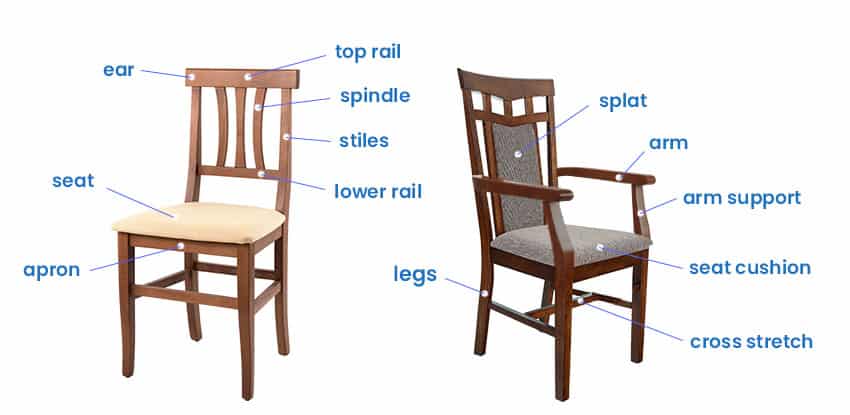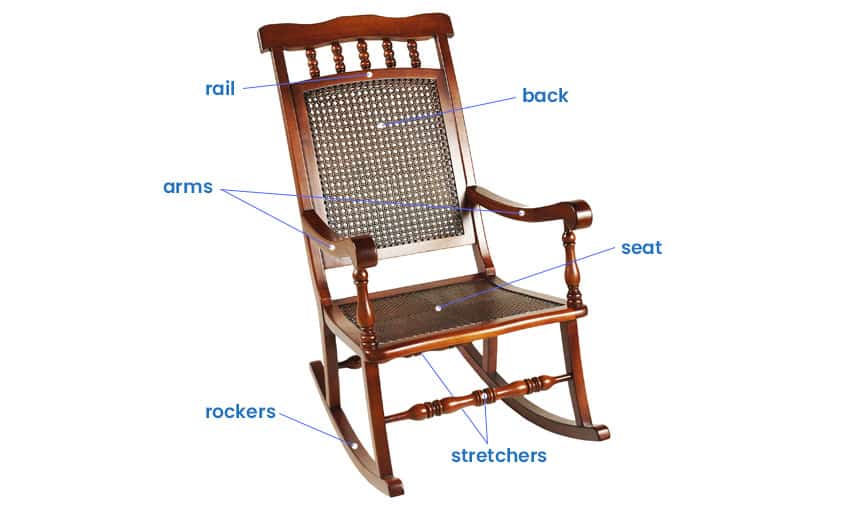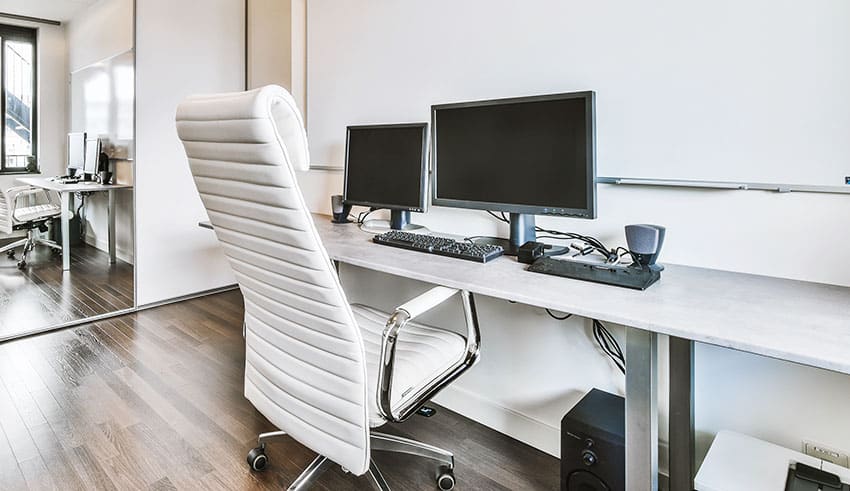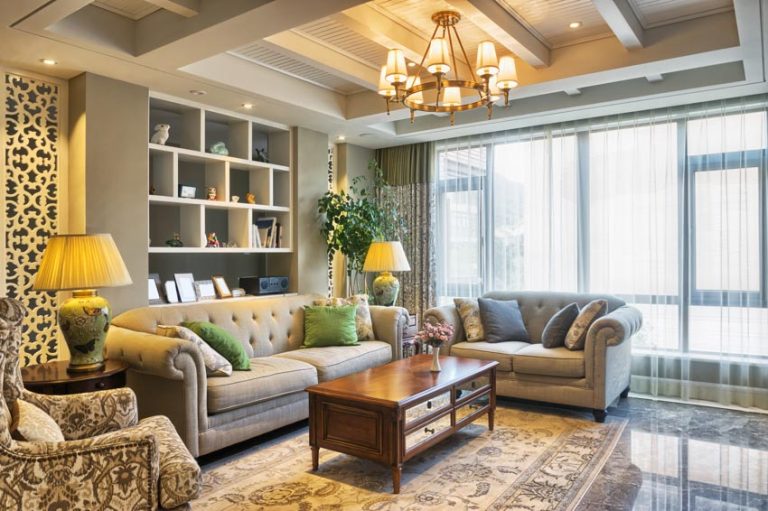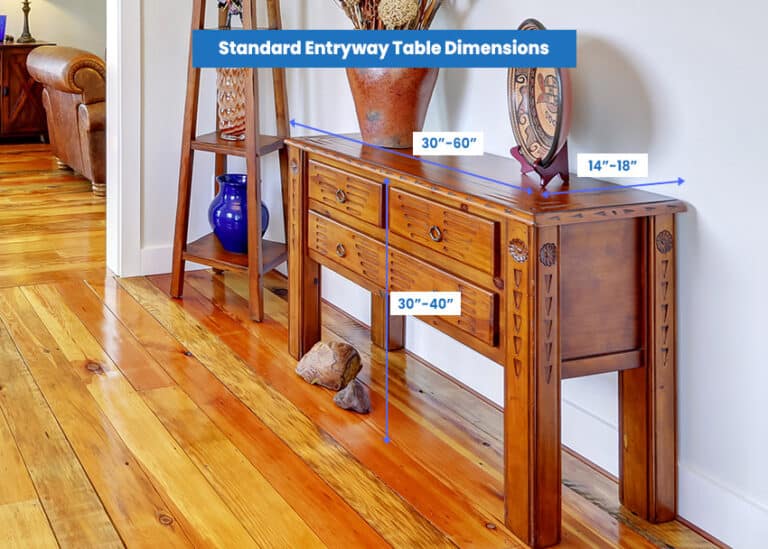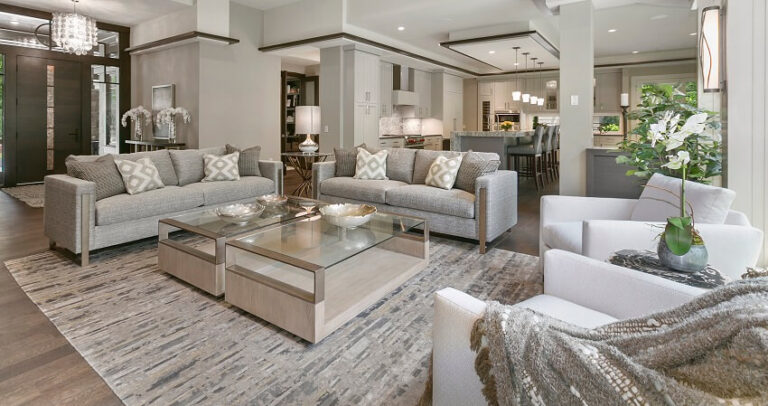Parts Of A Chair (Dining, Office, Rocking & Recliner)
The chair is one of the fundamental pieces of furniture you will need in your home, offering functionality, aesthetics, and comfort simultaneously. See the different parts, including different types, such as wooden dining chairs, office swivel seats, rocking chairs, recliners, and loungers.
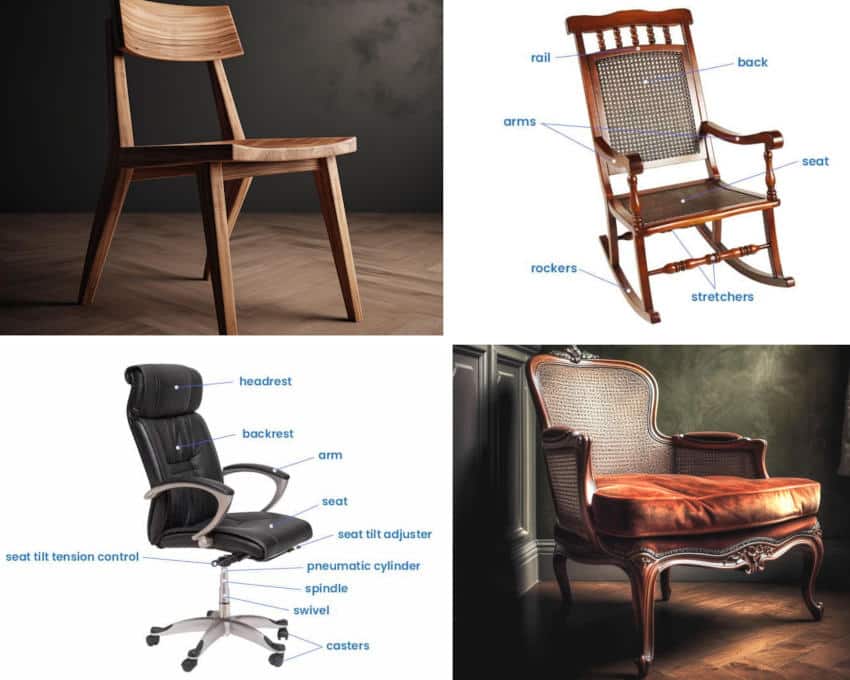
If you are up for learning everything about your chair and identifying what these different parts can provide your home, here are some types of chairs and their corresponding parts that you should know about.
Quicklist: Parts of the Chair According to Chair Style
| Chair Style | Parts | |
|---|---|---|
| Wood Chair | – Apron | – Lower Rail |
| – Arm Support | – Seat | |
| – Backrest | – Slip Seat | |
| – Corner Seat Brackets | – Splat | |
| – Cross Rail | – Spindles | |
| – Cross Stretch | – Stiles | |
| – Ear | – Top Rail | |
| – Frame | – Legs | |
| Swivel Chair | – Headrest | – Seat |
| – Backrest | – Seat Tilt Adjuster | |
| – Arm | – Seat Tilt Tension Control | |
| – Swivel Base | ||
| Rocking Chair | – Seat | – Legs |
| – Back | – Rails | |
| – Arms | – Stretchers | |
| – Rockers | ||
| Office Chair | (Parts not provided) | |
| Recliner Chair | – Frame | – Padding |
| – Fabric | – Back Cushion | |
| – Seat Cushion | – Headrest | |
| – Armrest | – Footrest | |
| Lounge Chair | – Top Back Rail | – Frame |
| – Top Arm Rail | – Backrest | |
| – Arm | – Back Stretcher Post | |
| – Seat Cushion | – Legs | |
| – Front Rail | – Side Rail | |
| – Pillow |
Parts of a Wood Chair
Starting from the basics will always be a good first step; with chairs, a wooden one can be considered the standard. A wooden type, usually known as a dining chair, has a straightforward design. It has three basic parts: the backrest, legs, and seat.
There may be some additions like the armrest and other elements to improve support and function, but these are the major and common ones.
For more ideas on what’s in store for standard chairs, here are some of the parts you can expect.
• Apron – A horizontal piece of wood. The front and back bracing connects the legs on both sides and supports the seat.
The goal of the apron is to provide extra structural support to the chair where your thighs are rested when you sit on it. The front bracing is notably shorter than the back bracing, accommodating more room for your knees.
The apron can also be a decorative element and come upholstered for comfort and aesthetic appeal. This creates a strong shift in the appearance of the chairs.
• Arm Supports – Just as it’s named and often only referred to as arms, these are parts where you lay your arms for comfort. They are usually located on the side and connected to the seat and back.
• Backrest – The back part of the chair is where you rest your back when sitting, both for support and comfort.
A backrest is usually composed of other sub-parts that provide extra support, including the back post that vertically runs through it and the rails horizontally installed in the backrest for added stability.
• Corner Seat Brackets – These corner brackets commonly reinforce the apron so that they will be supported more. They will act as a supportive and decorative feature at the same time.
• Cross Rail – Part of the backrest, the cross rail is the horizontal piece that offers both style and back support. These rails can come in more than just one, depending on the design you’ve chosen to purchase.
A cross-rail may also be referred to as a mid-rail. This part is positioned horizontally on the backrest’s center, adding back support.
• Cross Stretch – This part of the seat is a horizontal piece connected to the front legs and then to the chair, connecting these two areas to add strength and stability to the frame of this piece of furniture. Besides this function, it also adds visual value to the design.
• Ear – These small elements appear above the top rail and are named as such because they look like the ears of the seating.
When the tips of the stile extend over the top rail, they form an extra part on top of the chair. This part can both be structural and aesthetic, adding support and, at the same time, a distinctive look.
• Frame – The chair’s frame is one of the most vital parts since it is responsible for the stability and durability of the piece of furniture. This requires it to be well-made, durable, and comfortable for daily use.
• Legs – Regarding seat support, the legs are the major player since they are the elements connected to the floor. This means that they need to be incredibly durable to support your weight.
Chair legs are also responsible for giving the seat its elevated position above the floor and come in two types of pairs, including the following:
- Rear legs – Responsible for the chair’s back support and are connected from the back of the seat to the floor.
- Front legs – Supporting weight and providing stability, these legs are vital in the design and function of the piece of furniture. They are connected at the front of the seat and stretch toward the floor.
• Lower Rail – The lower rail is a horizontal wooden piece that connects two vertical posts the same way as the top rail but only on the lower part of the chair’s back.
A lower rail comes as curved or straight, along with inlays and carving, adding visual character to the chair and more than support.
• Seat – The crucial part of the chair, the seat, is the area or element you sit on and your bottom touch. The seat needs to be sturdy and leveled enough to accommodate your body and can either be upholstered or not, depending on the design. The upholstered ones provide better comfort for a lengthier time on the seat.
• Seat Cushion – The main goal of this part is to offer comfort as you sit on it. This means it must be large and soft enough to accommodate you. So when you choose, ensure you find the size and comfort that fits your needs.
• Slip Seat – Protecting your chair, a slip seat is something you can cover your furniture in to keep out dirt and other external elements that can dirty your seat or cause more serious and permanent damage.
• Splat – The splat is the vertical piece located at the central part of the backrest, adding further back support. To provide better comfort, it can come in a curve shape to go with the curve of your back.
• Spindles – Helping add structural integrity, spindles are vertical pieces that tie the legs together through the backrest’s center.
Normally made of wood but can also come in plastic or metal, these spindles have a round, oval, or square shape and work together with the rails. A broken spindle will lead to sagging and creaking, so note this.
• Stiles – Considered extensions of the rear legs, stiles contribute to vertical integrity and stability. This vertical element is an integral part of the frame, which helps support the backrest and the frame in general.
They can come either curved or straight, depending on the design. For a traditional look, go for the straight stiles, while the curved stiles offer a more luxurious feel to them. Thicker stiles also offer more durability and can help with more heavy-duty usage.
• Top Rail – Works the same way as the lower rail, the top rail is also a horizontal piece that connects the two vertical posts of the backrest, and the difference is the location of this part. Can be curved or straight; this part provides enough support to your chair’s upper back.
Parts of a Swivel Chair
A swivel chair, also known as an office or a desk chair, is a vital part of your office furniture. It is the furniture you will spend so much time with since you will sit on it when working the day.
“Chairs continue to captivate the imagination – even people who are not design aficionados love chairs.” – Mel Byars, Cinzia Anguissola d’Altoè, New Chairs
Design, Technology, and Materials
Learning more about it and its parts is important since it can help you be comfortable while you work or cause you to suffer the entire day.
Prolonged seating on improperly designed seats can lead to muscle tension in certain body parts, specifically the cervix, shoulder, and lumbar areas. – [Source: National Institutes of Health]
This type usually comprises the seat and the base, and they have their corresponding sub-parts that you need to learn about.
Swivel Chair Seat
This refers to the top part of the swivel chair and features the following sub-parts:
• Headrest – The headpiece refers to the top part of the seat, responsible for supporting the neck and head of the person sitting.
The headrest must be designed to help ease your neck stain and tension, especially since you are bound to spend some time sitting on the seating because of work.
• Backrest – This covers the entire back of the swivel chair and is responsible for supporting the posture of the person sitting. You lean your back on this part and can be extra comfortable when it is padded.
• Arm – Also known as armrests, this is where you play your arms (specifically accommodating your elbow and forearm) on so they won’t get tired easily.
The arms can be adjustable and come with a cushion for added comfort. Depending on the design, these arms can come in two or just one.
• Seat – Usually cushioned, this is the part where you lay your bottom to sit. It can be made from fabric or leather and attached to the seat using bolts and screws.
• Seat Tilt Adjuster – This vital part of the swivel chairs enables the person to access several functions, including tilting backward or locking it into place.
This allows you to accommodate your posture and be seated in the most comfortable position you prefer. Changing functions can be possible by simply turning the adjuster’s knob.
• Seat Tilt Tension Control – This part controls the tension in the seat, depending on your experience and the feeling of tipping backward.
Located under the seat, it allows you to set it to loose, which can make the chair feel unstable since it’s easy to tip over or tighten it, which will control the tilting function of the chair.
Swivel Chair Base
Similar to a pedestal, this part has a spiderweb design and multiple prongs that help stabilize the seat and prevent it from toppling over. The base of the swivel chair is the lower part of the furniture, which is comprised of the following sub-parts:
• Swivel – This refers to the mechanism that allows the chair to rotate 360 degrees, which is how it got its name. It’s located at the chair’s base, making working while sitting more enjoyable.
• Arm – This is the part attached at the base of the seat’s bottom, securing the chair to the base.
• Pneumatic Cylinder – Responsible for adjusting upward and downward to adjust its height and depth, this cylinder is filled with air, and the pressure inside allows you to adjust up or down using a lever. This mechanism also helps support your weight while sitting; most can accommodate 250 lbs or more.
• Spindle – Attaching the pneumatic cylinder to the base of the chair, the spindle acts as an element of support and can be made of plastic, metal, or wood, depending on the design.
• Casters – This refers to the wheels installed on the bottom with screws, allowing it to move easily from one place to another. Besides mobility, these casters also help with the chair’s stability.
A swivel chair has five or four casters, which must be cleaned and maintained properly to avoid possible accidents. The fifth caster is the center-locking caster installed in the middle, helping support your weight.
“What makes a good chair? Wherever they are used, ergonomic guidelines suggest that chair pans (seats) should be roomy enough to allow about 25% more excess space on each side of the buttocks.” – Marilyn Ekdahl Ravicz, Ergonomics for Home-Based Workers: Use Your Brain to Save Your Body
Parts of a Rocking Chair
While not a staple in homes, a rocking chair can be a wonderful addition if you want to snuggle and even take a nap comfortably. Compared to a standard seat or even a swivel chair, this style has parts way different, including the following:
• Seat – This part is designed to accommodate your entire weight, so it must be durable enough to function.
The traditional seats are made from solid wood and can be flat or curved. You can also find them in other materials, such as slatted wood, woven wicker, and fabric sling. And some may also be padded for additional comfort.
• Back – This covers the rocking chair’s upper and lower back. The back is made from thinner and rectangular slats (straight or curved) positioned horizontally, vertically, and evenly spaced throughout the area. Rocking chairs with pads and cushions are also installed, ensuring comfort for your back.
• Arms – One of the basic structures, the arms are useful to prop your elbows on to fully relax and benefit from this type of seat, along with the installation of cushions on the arms. They can come as solid wood and a smooth curving piece.
• Legs – This part is responsible for giving stability and support to the structure. The major difference between the legs of a rocking chair and the traditional one is that the former is connected to the rockers, allowing them to function better. The front legs are shorter than the rear legs, which extend to the back of the seat.
• Rails – These supportive structures keep the rocking chair sturdy and stable, even with the constant movement brought by the back-and-forth motion. These rails are usually short and thin pieces of wood installed in the seat’s perimeter and come either squared or rounded, depending on the design.
• Stretchers – Supporting the legs, these structures look similar to rails, but rather than connecting the chair and back, they join the legs together for more stability.
There are three stretchers, including the front, side, and back. They reinforce the body and prevent the seat from depressing and warping from the weight.
• Rockers – Also known as rocker rails, they are attached to the lower part of the legs and are responsible for facilitating movement that allows it to function as a rocking chair.
Parts of an Office Chair

If you’re looking for the different parts of an office chair, you have several options to consider. Most of the time, office chairs can swivel, so you can check out the different parts of a swivel chair.
An office chair, though, would depend on your preference, and you can go for the traditional four-legged chair too. You can even choose a recliner and have the budget for it. If you are looking for one that lessens lumbar injury, a seat with an ergonomic construction might be your best bet.
BIFMA suggests that an ergonomic seat width should be at least 19.2 inches in width, but for large occupants, the ergonomics should be at least 22 inches wide pan. [Source: BIFMA]
Parts of a Recliner Chair
A recliner chair is a comfortable seat type you can place in your living room or entertainment room. Compared to other types of chairs, it has more complicated parts and may be a bit overwhelming.
The different parts of the recliner chair will also rely on the model you are considering. Here are the external and internal parts you can explore for the basic recliner seatmodel.
External Parts
Recliner have the following external parts you will easily see from the outside.
• Frame – Mostly made from metal or hardwood, this part is the main component and support of the chair. It is usually attached with padding to contribute to the comfort it features.
• Fabric – After the padding, the fabric is used to cover the entire recliner, adding protection to the furniture and, at the same time, aesthetic value.
The most common fabrics used on this seat are microfiber, vinyl, and leather, which can affect the cost of the chair (with leather being the most durable but also the most expensive option).
• Padding – This is usually added to the frame to add weight and comfort to the entire seat. Similar to the headrest, it can be made of fiber or foam, and the firmness and softness will dictate how comfortable the recliner will be.
• Back Cushion – This is specifically the padding arranged and installed to the back of the seat for comfort and enough support to your spin. Most recliners also offer lumbar support that reduces back pain.
• Seat Cushion – Another padded part in your recliner, this is focused on the comfort of your bottoms. It must be large enough to accommodate you and firm enough that it won’t sag and remain depressed just for sitting on it for a few hours.
• Headrest – Providing neck and head support, this part can be made of fiber or foam. It can easily be positioned to accommodate the most comfortable one for you.
• Armrest – Just as its name suggests, this refers to the area where you put your entire forearm, maximizing comfort in the experience.
• Footrest – Similar to how the armrest works, this is where you place your feet and can be considered by many as a luxurious and extremely comfortable addition to the recliner.
Internal Parts
The internal parts are the small yet vital structures that make the recliner function as it is. Some of these parts include the following:
• Mechanism – This part is what makes this seat a recliner in the first place. Installed inside the frame, the seat can be moved in different positions.
• Motor – Powering the reclining mechanism: this part is only available in electric recliners with an engine and can also be found inside the frame.
• Hinges – These are responsible for attaching the backrest to the frame and allowing it to move forward or backward for a more comfortable position.
• Latch – Found on the frame’s side, this part allows the seating to be kept upright when preferred, usually when not used.
• Cord – Plugged into an outlet and connected to the motor; this is the part used to power the reclining mechanism.
Parts of a Lounge Chair
A lounge chair is a piece of furniture that prioritizes comfort above all, but it can come in different forms. It can be an upholstered lounge chair or an outfitted one with waterproof removable cushions. The most traditional lounge chair, though, is the one that’s usually found in a psychologist’s office.
With many types of lounge chairs available in the market, discussing the different parts of lounge chairs can be complicated. Some of the most common parts include the following:
• Top Back Rail – This refers to the horizontal piece attached to the two uprights of the seating using nails and screws. It helps attach the armchair to the side rails and normally measures around 5 inches. This provides more support to your seating’s back.
• Top Arm Rail – Part of the frame, this rail connects the two vertical posts for better arm support when sitting down.
• Arm – Comes in a variety of sizes and supports your arms. They can be fixed or adjustable, depending on how they are designed. The former cannot be moved, while the latter can easily be positioned to accommodate your comfort.
• Frame – This is the most important part of the lounge chair since it provides the general structure of the furniture, as well as accommodates the design, features, and add-ons. Depending on the manufacturers, it can be made of wood, metal, or plastic.
• Backrest – In lounge chairs, this is one of the most important furniture elements since more than just a “seat,” it often acts as a “bed.” This part helps support your back and can be upholstered to add comfort.
• Back Stretcher Post – Supporting the backrest, this part is attached to the frame for more durability and stability to carry your weight as you are set in a comfortable position. This is attached to the backrest using either nails or screws.
• Seat Cushion – Normally made of soft upholstery material, this part adds comfort when you use your chair.
• Legs – This is simply the part that supports your legs when you use the lounger and can be kept elevated from the ground for a more comfortable position.
• Front Rail – Considered as the front frame, this connects the two front legs to help with the weight support. They can either be curved or straight, too.
• Side Rail – Located at the side of the frame, this piece runs from the side to the back for more support. It can be made of either metal or wood and come straight or curved.
• Pillow – Lounge chairs can also have a pillow for maximum comfort. It can be sewn on the seating or an added option you can take out if you don’t feel like using it.
What Is the Back of a Chair Called
The back of a seat is called the backrest since it is technically the area where you will rest your back when sitting on the armchair. The backrest supports your posture by alighting your neck and entire back.
The shape of the backrest will help you maintain the correct sitting position and the proper spine curve. This part of an armchair will help you comfortably sit on it for a long time without your back getting tired.
See more related content in our article about the parts of a bed here.

